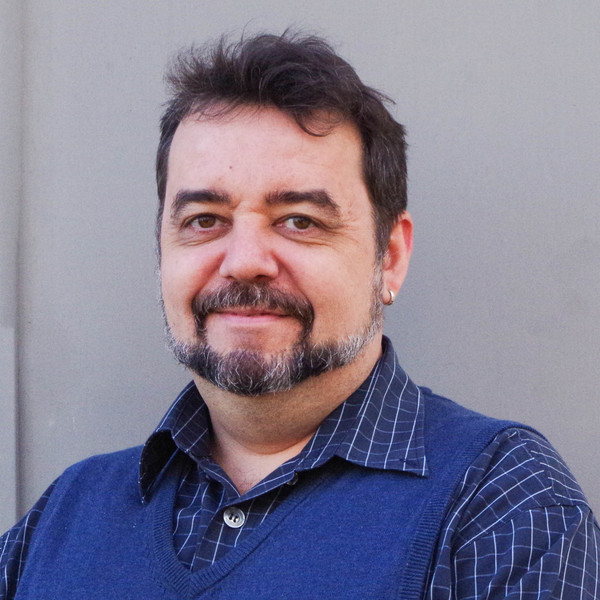
January - June 2020
Mail: mikhail.tyaglyy(at)gmail(dot)com
Mykhaylo Tyaglyy has been working for the Ukrainian Center for Holocaust Studies doing research on the National Socialist genocide of Roma in Ukraine. He is also managing editor of the scholarly journal Holocaust and Modernity: Studies in Ukraine and the World published by the UCHS. In 2011-2019, he was part of the international project “Protecting Memory” aiming at transforming the neglected and forgotten mass graves of Jews and Roma into dignified places of remembrance. Mykhaylo is also an expert in Ukraine for the European Holocaust Research Infrastructure and for the USHMM’s Archival Acquisitions program, as well as for Yad Vashem’s “Untold Stories” project. In 2005 he authored the book Sites of Mass Murder of Crimean Jews during the Nazi Occupation of the Peninsula, 1941–1944.
Mykhaylo Tyaglyy has been working on the book about the fate of the Roma during the Nazi domination, particularly in the Reichskommissariat Ukraine and the areas under Wehrmacht control. The aim is to explore the evolution of the anti-Roma policies; to identify the central initiatives and to track them down; to examine the contribution of the local military, SS-Police and civil administrations to the process resulted in extermination of itinerant and settled Roma groups in most localities in 1942-1943, and to try to find out how the racially and ideologically based factors could have played crucial role in decision-making process, in combination with the reasons such as security, real or imagined participation of the Roma in resistance, etc. Besides, examination is necessary of the local administrations and police who contributed to the persecution.
The attitudes of the Ukrainian nationalist movement must be explored. During the wartime, the notion of a spy danger for nationalist guerrilla allegedly posed by nomadic Roma accrued, partially because of attempts by the Roma to find shelter in Soviet partisan units. Comparing to the local Servitka Roma, the nomadic Polska Roma attracted attention of the Ukrainian nationalists, as by the UPA they were associated with the Poles within the Volhynia massacre of 1943. These circumstances were reinforced by steady popular images depicting Roma basically as inferiors. This combination led to the use of lethal violence by some Ukrainian nationalist units primarily towards nomadic Roma, but sometimes also to the local Roma villagers.
The victims’ survival strategies, responses to persecution and interactions with the non-Roma are still understudied. There was a variety of the Roma ethnic subgroups, each with its own cultural profile, let alone the number of those moved to settled way of life. Their survival strategies could also vary. In scholarly literature several definitions of resistance can be found. It is possibly to adjust such concepts to the Roma genocide case only taking into account important specificities. One cannot expect equal reactions to the persecution from different groups; each one can only use the ways determined by its own profile.
Traumas that the Roma experienced undoubtedly impacted them in the postwar time. Roma do keep the memories of the persecution. However, this knowledge for decades was remaining in the realm of their own “communicative memory” having no way out to wider audience and getting no means to become an integral part of the wider “cultural memory”. Only recently, Roma in Ukraine have started to realize the important role that history can play. Similar can be noted about the wider society, which failed to learn about the persecutions of the Roma and to make a historical lesson out of it. The ways the Roma genocide was and still is perceived both in Roma community as well as in the wider Ukrainian society is to be examined.
Михаил Тяглый, МестамассовогоуничтоженияевреевКрымавпериоднацистскойоккупацииполуострова (1941-1944) [Sites of mass murder of the Crimean Jews during the Nazi occupation of the peninsula, 1941-44] (Симферополь: Хесед Шимон, 2005).
Михайло Тяглий, ред.,ЄврейськийопірвУкраїнівперіодГолокосту [Jewish resistance in Ukraine during the Holocaust] (Дніпропетровськ: Центр «Ткума», 2004).
Михайло Тяглий, ред., Геноцид ромів України в період Другої світової війни: вивчення, викладання, комеморація. Матеріали наукової конференції [Genocide of the Roma of Ukraine: Research, Education, Commemoration. Proceedings of the scholarly conference] (Київ: Укр. центр вивч. історії Голокосту, 2016).
Михайло Тяглий, ред., Переслідування та вбивства ромів на теренах України у часи Другої світової війни. Збірник документів, матеріалів та спогадів [Persecution and mass killings of the Roma in Ukraine occupied during the WWII. Collection of documents, materials and testimonies] (Київ: Укр. центр вивч. історії Голокосту, 2017).
“Chapter 6: Research in the East-Slavic Linguistic Region”, in Research in Teaching and Learning about the Holocaust: A Dialogue Beyond Borders, edited by Monique Eckmann, Doyle Stevick and Jolanta Ambrosewicz-Jacobs (Berlin: Metropol, 2017), 121-153.
“Nazi occupation policies and the mass murder of the Roma in Ukraine,” in The Nazi Genocide of the Gypsies: Reevaluation and Commemoration, edited by Anton Weiss-Wendt (New York: Berghahn Books, 2013), 121-152.
“Genocide of the Roma, 1941–1944: How Is It Being Remembered in Contemporary Ukraine”, in Education for Remembrance of the Roma Genocide. Scholarship, Commemoration and the Role of Youth, edited by Anna Mirga-Kruszelnicka, Esteban Acuna C. and Piotr Trojański (Cracow, 2015), 97-120.
“Zigeuner sind im allgemeinen wie Juden zu behandeln”: Évolution de la politique anti-tsigane du Commissariat du Reich Ukraine au cours du printemps et de l’été 1942, in «Roms», «Tsiganes», «Nomades». Un malentendu européen, edited by Catherine Coquio et Jean-Luc Poueyto (Paris: Karthala, 2014), 165-176.
“Ставлення місцевого населення в окупованій Україні до переслідуваних ромів, 1941-1944” [Attitudes of the local population to the Roma persecuted in Ukraine, 1941-1944], in Геноцид ромів України в період Другої світової війни: вивчення, викладання, комеморація. Матеріали наукової конференції [Genocide of the Roma of Ukraine: Research, Education, Commemoration. Proceedings of the scholarly conference], edited by Mykhaylo Tyaglyy (Kyiv: UCHS, 2016), 126-158.
“The Role of Antisemitic Doctrine in German Propaganda in the Crimea, 1941-44”, Holocaust and Genocide Studies 18, No. 3 (Winter 2004): 421-459.
“Antisemitic Doctrine in Crimean Tatar newspaper Azat Kirim, 1942-1944”, Dapim. Studies on the Shoah, 25 (2011): 161-182.
“Were the “Chingene” Victims of the Holocaust? The Nazi policy toward the Crimean Roma,” Holocaust and Genocide Studies 23, No. 1 (Spring 2009): 26-53.